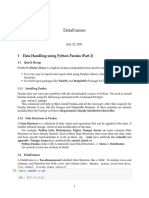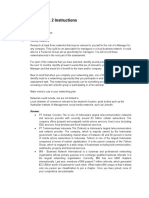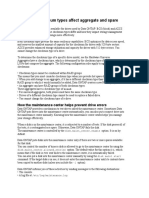0% found this document useful (0 votes)
5 views9 pagesPandas Assignment Version-2
The document provides an introduction to the Pandas library in Python, covering installation, data structures (Series and DataFrame), and various methods for creating these structures. It explains how Series can be used like a NumPy array and a dictionary, while DataFrames can be constructed from different data sources, including lists, dictionaries, and NumPy arrays. The document includes code examples to illustrate the concepts discussed.
Uploaded by
muhammadramzansial77Copyright
© © All Rights Reserved
We take content rights seriously. If you suspect this is your content, claim it here.
Available Formats
Download as PDF, TXT or read online on Scribd
0% found this document useful (0 votes)
5 views9 pagesPandas Assignment Version-2
The document provides an introduction to the Pandas library in Python, covering installation, data structures (Series and DataFrame), and various methods for creating these structures. It explains how Series can be used like a NumPy array and a dictionary, while DataFrames can be constructed from different data sources, including lists, dictionaries, and NumPy arrays. The document includes code examples to illustrate the concepts discussed.
Uploaded by
muhammadramzansial77Copyright
© © All Rights Reserved
We take content rights seriously. If you suspect this is your content, claim it here.
Available Formats
Download as PDF, TXT or read online on Scribd
/ 9


































































































